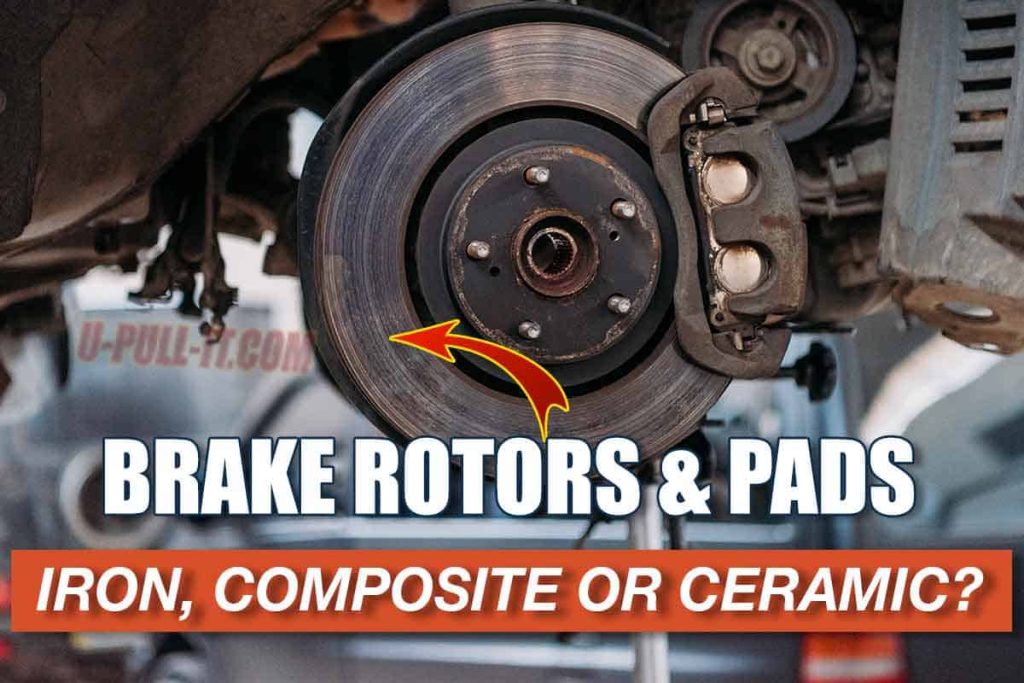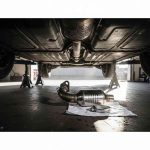Drum brakes, the fundamental components of a vehicle’s braking system located at the wheels, play a crucial role in safe driving and stopping power. Their drilled holes enhance performance by cooling the pad surface. These parts, including drum brakes and wheels, are available in different types, such as standard brake rotors, vented rotors with drilled holes, ceramic rotors, and factory rotors, each offering unique benefits to braking performance.
The heat dissipation properties of brake performance components like the brake disc, drum brakes, and brake pad surface can significantly impact the braking system’s temperature regulation and overall life. Whether you’re considering a modification to vented rotors or opting for a kit upgrade with factory rotors, understanding the performance characteristics of these rotor types is essential. This knowledge ensures the optimal functioning of your brakes in accordance with your driving style and original equipment manufacturer specs.

Functioning and Importance of Brake Rotors
Brake rotors, critical components of a car’s braking system, are often disc-shaped with drilled holes to accommodate various driving styles. Factory rotors and components, such as the disc, work in conjunction with brake pads to enhance braking performance, bringing the vehicle to a halt. The force exerted on the brake pedal influences the braking performance as it’s transmitted to the brake pads. These pads then apply pressure on the disc, causing a modification in the vehicle’s speed. The temperature can affect this process, either slowing down or stopping the vehicle.
Heat Dissipation
During this braking performance process, a significant amount of heat is generated due to friction between the brake pads and rotors, potentially causing temperature fluctuations, cracking, and warping. The primary function of brake rotors, a crucial fit component, is to absorb and dissipate heat efficiently, preventing cracking and unnecessary modification. If not for components like the brake disc, standard brake rotors, metallic brake pads, and slotted brake rotors, your car’s braking system could overheat leading to decreased performance or even failure.
- Absorb heat from friction.
- Disperse heat into the surrounding air
Impact on Braking Efficiency
The components of your brake rotors directly impact the fit and efficiency of your vehicle’s braking kit, which comes with a lifetime warranty. Worn out or damaged brake discs can lead to decreased brake performance, increased stopping distances, reduced response time, and an unreliable brake pad surface. This is especially true when using metallic brake pads.
- Increased stopping distance
- Reduced response time
Types of Brake Rotors: Front and Rear Discs
Front Brake Discs
Front brake rotors, often larger than their rear counterparts, play a crucial role in premium vehicles and come with a lifetime warranty. The size difference in premium brake rotors is due to the higher braking demands on the front wheels, often requiring performance brake rotors or slotted brake rotors and metallic brake pads. This slotted brake rotors design is common regardless of the manufacturer or driving style, complete with a lifetime warranty and metallic brake pads for a premium experience.
- Double disk type for high-performance cars
- Cross type for off-road vehicles
- Pairs style for regular city cars
Rear Brake Discs
Rear brake rotors, though smaller and premium, hold immense importance and come with a lifetime warranty. Metallic brake pads and slotted brake rotors provide balanced stopping power, vital for safe driving, with a lifetime warranty.
- Single disc type for compact cars
- Cross type for heavy-duty trucks
- Pairs style for luxury sedans
Both front and rear brake discs, covered by our lifetime warranty, need regular inspections to check for wear and tear. Regular maintenance, including the use of metallic brake pads and slotted brake rotors, ensures optimal performance and extends the lifetime of your vehicle’s braking system. Always check the warranty for these components.
Maintenance Tips
- Check brake discs every 10,000 miles.
- Look out for signs of wear such as grooves or cracks in your metallic brake pads. Check the lifetime warranty.
- Replace worn-out discs immediately to prevent further damage.
Premium vs Standard Replacement Brake Rotor Kits
Premium Brake Rotors
Premium brake rotors are high-quality options. They offer:
- Enhanced performance
- Longevity
- Made from premium quality cast iron
- Meet or exceed original equipment manufacturer specs.
Metallic brake pads are ideal for drivers who prioritize performance and durability over cost, all under warranty.
Standard Brake Rotors
On the other hand, standard kits are budget-friendly options with warranty. Despite being more affordable, they may require frequent replacements due to their lower quality materials and lack of warranty. These kits are suitable for:
- Casual drivers
- Tight budgets
- Older vehicles that don’t require high-performance parts.
Your choice between premium and standard brake rotor kits, each with its own warranty, ultimately depends on several factors.
- Driving habits: Do you frequently drive in challenging conditions? If so, premium might be your best bet.
- Budget: Can you afford the upfront cost of a premium kit? If not, a standard kit is a viable option.
- Vehicle type: High-performance cars often need premium parts to maintain their performance levels.
Insights into Dimpled, Slotted, and Drilled Brake Rotors
Dimpled Rotors
Dimpled brake rotors are a popular choice for many. These designs have small indentations, or ‘dimples,’ on the surface. The main advantage? They provide better heat dissipation. This means they cool down faster after heavy braking, reducing wear and tear. Plus, they don’t sacrifice rotor strength.
- Design: Silver in color with dimpled surface.
- Benefits: Improved heat dissipation; maintains rotor strength.
Slotted Rotors
Next up, slotted brake rotors. These feature curved slots carved into their surface. Their key benefit lies in improving the brake pad’s bite under heavy usage conditions – think towing or racing.
- Design: Silver rotors with curved slots.
- Benefits: Enhanced pad bite under intense use; suitable for heavy-duty applications.
Drilled Rotors
Finally, drilled rotors. As the name suggests, these have drilled holes across the surface of the rotor. Superior cooling is their major selling point but beware: they can crack under extreme stress due to those same holes.
- Design: Drilled rotors give a car a sporty, high-performance look that many car enthusiasts appreciate.
- Functional Benefits:
Heat Dissipation: The holes in drilled rotors allow heat to escape more efficiently, reducing the risk of brake fade and increasing the longevity of the brake system.
Improved Braking Performance: The holes provide better “bite” for the brake pads, improving initial brake response and overall stopping power.
Reduced Weight: Drilled rotors are generally lighter than their solid counterparts, which can contribute to reduced unsprung weight and better handling.
Water Dispersion: The holes help to disperse water from the rotor surface, improving braking performance in wet conditions.
Gas Venting: During heavy braking, gases can form between the brake pad and rotor. The holes in drilled rotors allow these gases to escape, maintaining consistent contact between the pad and rotor.
Reduced Brake Pad Glazing: The drilling helps keep the brake pads fresh by scraping away any glaze on the pad surface.
Compatibility: Drilled rotors are often compatible with various brake pads, allowing for customization based on driving needs.
Better Cooling: The design allows for better air circulation, which cools down the rotors faster than solid rotors.
Reduced Stopping Distance: Drilled rotors can reduce the stopping distance due to improved grip and heat dissipation, especially in high-stress or high-speed situations.
Enhanced Durability: Quality drilled rotors are engineered to be strong, often made from high-grade materials that resist warping and cracking.

Knowing When and How to Replace Brake Rotors
Signs of Worn-Out Brake Rotors
- Vibration during braking
- Visible grooves on rotor surface
- Unusual noises when applying brakes
These signs indicate it’s time to replace your brake rotors. Over the course of a year, these symptoms may become more apparent.
Professional Installation
Brake systems are complex. It’s recommended to have a professional install your new brake rotors. This ensures proper installation and safety.
Regular Maintenance
Regular maintenance can extend the lifespan of your brake rotors. This includes routine inspections and timely repairs.
- Brake Fluid Change: Regularly changing the brake fluid can prevent corrosion within the brake system, which can affect rotor life.
- Brake Pad Replacement: Worn-out brake pads can damage rotors. Always replace brake pads before they get too thin.
- Rotor Resurfacing: If your rotors are still in good condition but have minor grooves or imperfections, they can be resurfaced to extend their life.
- Cleaning: Periodically clean the rotors with brake cleaner to remove dirt, grime, and brake dust.
- Lubrication: Use high-temperature brake grease on the caliper pins and other moving parts to ensure smooth operation.
Quality Brake Rotors’ Necessity
High-Quality Rotors Reduce Risk
Performance brake rotors of high quality are a must-have for any vehicle. They:
- Minimize the risk of premature wear or failure, especially in critical moments.
- Provide consistent performance across various driving conditions.
A substandard brake rotor may fail unexpectedly, potentially leading to accidents. On the other hand, quality brake rotors can withstand heavy use and harsh conditions without compromising their effectiveness.
Consistent Performance Across Conditions
Regardless of whether you’re driving on a smooth highway or rough off-road terrain, you need your brakes to perform consistently. Quality brake rotors ensure this consistency by:
- Maintaining optimal friction levels.
- Effectively dissipating heat.
- Resisting wear and tear.
Inconsistent braking can lead to longer stopping distances or even complete brake failure, both of which pose serious safety risks.
What Are The Different Types of Brake Rotor Materials?
Brake rotors are made from various materials, each with unique properties affecting their durability, performance, and cost. Here’s a quick rundown:
- Cast Iron: Widely used due to its high heat capacity and durability. It pairs well with metallic brake pads.
- Composite: A blend of iron and other elements like silicon or carbon. Offers a balance between performance and price.
- Carbon-Ceramic: Known for excellent heat resistance but comes at a higher cost.
Brake rotors are a critical component of your vehicle’s braking system and come in various materials. Each material has its own set of characteristics that influence factors like durability, heat resistance, and cost. Let’s delve into the specifics:
Cast Iron Rotors: The Industry Standard
Cast iron rotors are the most commonly used type of brake rotors and are found in a wide range of vehicles, from economy cars to some performance models. They are renowned for their high heat capacity, which allows them to withstand extreme temperatures generated during braking without warping. This makes them highly durable and a perfect match for metallic brake pads. However, they are relatively heavy, which can slightly impact fuel efficiency and handling.
Composite Rotors: The Balanced Choice
Composite brake rotors are engineered by combining cast iron with other elements such as silicon or carbon. This fusion results in a rotor that offers a balanced performance profile. They are generally lighter than pure cast iron rotors, which can lead to improved fuel efficiency and less unsprung weight, enhancing the vehicle’s handling. While they may not have the extreme heat resistance of cast iron, they still offer adequate performance for most everyday driving conditions. They sit at a moderate price point, making them a cost-effective choice for those who seek a balance between performance and budget.
Carbon-Ceramic Rotors: The Premium Option
Carbon-ceramic rotors are the epitome of high-performance braking. These rotors are crafted from a composite of carbon fibers and ceramic, making them incredibly lightweight compared to their cast iron counterparts. This reduction in weight improves fuel efficiency and allows for more agile handling. Their standout feature is their exceptional heat resistance; they can handle extreme temperatures without losing structural integrity or performance. This makes them ideal for high-performance vehicles and track use. However, this level of performance comes at a premium cost, often making them an expensive upgrade suitable mainly for luxury or performance vehicles.
Can You Mix Rotor and Pad Materials?
Impact on Braking Efficiency
Mixing brake rotors and pad materials can have an impact on your vehicle’s braking efficiency. It might also affect the lifespan of these components.
- Using dissimilar materials for pads and rotors can lead to uneven wear.
- This could potentially decrease the effectiveness of your brakes over time.
It’s always best to follow the manufacturer’s recommendations. They have tested various combinations to determine which ones provide optimal performance.
Risks of Incorrect Combinations
Incorrect combinations of rotor and pad materials can lead to increased wear or even potential brake failure.
- A hard pad material combined with a soft rotor, for example, may cause the rotor to wear out faster.
- Conversely, a soft pad with a hard rotor could result in the pads wearing out prematurely.
So, sticking to recommended pairings is crucial not only for optimal performance but also for safety reasons.
How Much, on average, do Rotors Cost Depending on their materials?
The cost of brake rotors varies widely, ranging from $150 to $300 per axle for new rotors. If you opt for professional installation, expect to add another $150 to $250 to the total cost. Retailers like Advance offer brake rotors at an average price of $75 each, with some name-brand options available for under $30. DIY replacement can save you money.
Several factors contribute to the price differences:
- Size: Larger rotors, like the 15.7-inch ones on a Corvette Z06, require more material and are therefore more expensive than smaller ones, such as the 9.3-inch rotors on a Chevy Spark.
- Front or Rear: Front brake rotors, which handle most of the braking work, are generally larger and more expensive than rear ones.
- Material: Cast iron rotors are commonly used and are relatively affordable. Steel, aluminum, and carbon-ceramic rotors are progressively more expensive due to their performance benefits.
- Corrosion Resistance: Rotors with corrosion-resistant coatings like electrophoretic zinc plating or paint are more durable and slightly more expensive. Brands like Carquest and Frontline offer such options.
- Performance Features: Rotors that are vented, drilled, or slotted offer better heat dissipation and are more expensive due to the extra machining required.
- Brand Name: Just like in fashion, the brand name can significantly impact the price.
Cast Iron Rotors
- Most affordable
- Less durable
Cast iron rotors are the go-to for many because of their affordability. They’re easy on your wallet but they don’t last as long.
Composite Rotors
- Balanced cost and performance
- More durable than cast iron
Composite rotors are a bit more expensive than cast iron ones. But, they offer better performance and durability.
Carbon-Ceramic Rotors
- Priciest option
- High-performance characteristics
If you’re after top-notch performance, carbon-ceramic rotors are the way to go. These babies can handle a lot of heat and pressure, but they come with a hefty price tag.
To sum it up:
| Rotor Type | Cost | Durability |
|---|---|---|
| Cast Iron | $ | Low |
| Composite | $$ | Medium |
| Carbon-Ceramic | $$$ | High |
Remember, picking the right brake rotor isn’t just about cost. Consider your driving habits and needs before making a decision.
What is the Average Cost of Installation of New Rotors and Brake Pads?
Costs Vary
The cost of installing new brake rotors and pads isn’t fixed. It varies depending on:
- Vehicle make/model
- Labor rates
- Geographic location
For example, a luxury car model’s brake system might demand higher costs compared to an average sedan. Similarly, labor rates are often higher in urban areas than rural ones.
Additional Expenses
Besides the basic installation cost, you may also need to budget for:
- Brake fluid change
- Caliper servicing
These aren’t always necessary but can add up if your vehicle requires them.
Regular Maintenance
Regular maintenance helps keep your brake system in good shape. This can help you avoid unexpected repair costs such as: Replacing worn-out rotors prematurely.
Common Causes of Worn Rotors
High-Speed Braking
Frequent braking at high speeds is a prime culprit for rotor wear. It’s physics: the faster you go, the more energy your brakes need to absorb to stop. This energy creates heat, and too much of it can warp and wear down your rotors.
Example: Picture driving down a steep hill and constantly using your brakes to control speed. Each brake application generates intense heat, leading to rapid rotor wear.
Worn-Out Brake Pads
Driving with worn-out brake pads isn’t just dangerous—it also increases the risk of damaging your rotors.
- Why? Because worn-out pads lack sufficient material to cushion the rotor, causing metal-on-metal contact.
- Result: This not only wears out the rotor but also reduces braking efficiency.
Skipping Regular Inspections
Regular brake inspections are crucial in maintaining healthy rotors. Neglecting these checks accelerates deterioration rate—out of sight shouldn’t mean out of mind!
- Case Study: A study by CarTech found that drivers who skipped regular inspections experienced 50% more rotor replacements compared to those who didn’t.
Why Do Brake Rotors Warp?
The Heat Factor
Brake rotors can warp due to overheating. This typically happens when a driver is aggressive on the road or carries heavy loads. The excessive heat generated from these driving conditions can cause the rotor to warp.
Material Quality Matters
The quality of materials used in brake rotors also plays a role in warping. If the materials are of poor quality, they may not withstand normal driving conditions and end up warping.
Wheel Lug Nut Torque
Incorrect wheel lug nut torque is another factor that can lead to warped brake rotors. If the lug nuts are too tight or too loose, it could cause uneven pressure on the rotor leading to its deformation.
To summarize:
- Overheating due to aggressive driving or heavy loads causes warping.
- Poor quality materials may warp under normal driving conditions.
- Incorrect wheel lug nut torque can also lead to warped rotors.
By understanding these factors, drivers can take preventative measures to reduce the risk of rotor warping and ensure their vehicle’s braking system remains effective and safe.
VIBRATING BRAKE PEDAL
Warped or Damaged Rotors
A vibrating brake pedal is a common symptom of warped or damaged brake rotors. This vibration can be felt through the brake pedal when you attempt to stop your vehicle. The uneven pad surface interacting with the rotor causes this vibration.
- Warped Rotor: A warped rotor leads to an uneven distribution of braking power, causing the brake pedal to vibrate.
- Damaged Rotor: Physical damage like cracks or grooves on the rotor can cause vibrations as it disrupts the smooth interaction between the brake pad and rotor.
Suspension Components or Tires Issues
The issue may not always lie with your brake rotors. Sometimes, a vibrating brake pedal could indicate problems with other parts of your car:
- Suspension Components: Worn out suspension components can lead to vibrations when braking.
- Tires: Unbalanced tires or tires with flat spots can also cause your brake pedal to vibrate.
Immediate Attention Required
A vibrating brake pedal requires immediate attention:
Ignoring this problem might lead to further damage in your vehicle’s braking system.
GRINDING NOISE WHEN BRAKING
Signs of Severe Rotor Wear
A grinding noise during braking often points to severe rotor wear or damaged brake pads. These issues can affect your vehicle’s overall brake performance. The friction level between the brake pad surface and drum brakes changes, producing a distinct noise.
- Damaged brake pads can result in a less smooth surface ground, altering the stopping power.
- Brake rotors with severe wear may show signs of cracking or uneven heat dissipation.
Ignoring these sounds is not an option. They warn you about potential problems that could lead to expensive repairs if left unattended. Furthermore, they pose risks for unsafe driving conditions.
Immediate Action Needed
Immediate inspection and repair are necessary for safe vehicle operation. Here’s what you need to do:
- Stop your car immediately if you hear a grinding noise.
- Check the workmanship of your brake parts at a trusted auto shop.
- Replace worn-out drum brakes or brake pads promptly to prevent further damage.
Using quality parts from reliable suppliers like Parts Geek ensures optimal performance and longevity.
You Should Never Buy Used Rotors or Brake Pads
Understanding your vehicle’s brake system, especially the rotors and pads, is crucial for safety and performance. We’ve discussed everything from the function of brake rotors to the signs of worn-out ones. Now, let’s cut to the chase: never buy used rotors or brake pads. It may seem like a quick fix for a tight budget, but it could lead to more significant problems down the line.
Used parts have unknown histories; their lifespan and reliability are uncertain. Plus, mixing rotor and pad materials can cause uneven braking and premature wear. Investing in quality new parts ensures you get top-notch performance and peace of mind while on the road. So, do yourself a favor – opt for new brake rotors and pads every time you need replacements and do NOT buy used brake rotors from salvage yards or any other used parts source, your safety and other matters more than a few bucks.
Brake Rotors and Pads FAQs
What are some signs that my brake rotors need replacing?
If your car vibrates when braking or makes grinding noises, these could be signs that your rotors are worn out or warped.
What’s the average cost of installing new brake rotors?
The average cost varies depending on make and model but expect to spend between $200-$400 per axle.
Can I mix rotor and pad materials?
It’s not recommended as it can cause uneven braking and accelerate wear.
How often should I replace my brake pads?
Typically, brake pads should be replaced every 50,000 miles but always refer to your vehicle’s maintenance guide for specifics.
Why is buying used rotors or pads a bad idea?
Used parts have unknown histories, which makes their reliability uncertain. They might also not match with other components, leading to underperformance.
What are the best types of brake rotors and pads for my vehicle?
The best types of brake rotors and pads for your vehicle depend on the driving you do. Traditional disc brakes with ceramic brake pads are an excellent choice for regular city driving. However, drilled and slotted rotors may be better suited for more intense driving conditions such as towing or hauling. Always remember, your safety is paramount, so it’s best to consult with a mechanic or brake service expert about the best options for your specific vehicle and driving habits.
When do I need to replace my rotors and brake pads?
Brake rotors and pads wear down over time and eventually must be replaced. Some of the common signs that this may be the case include a squealing or grinding noise when you apply the brakes, your vehicle pulling to one side when you brake, or the brake pedal vibrating. Also, a replacement is usually necessary if your brake pads have worn down to less than a quarter of an inch thick. For brake rotors, signs of excessive wear might include grooves or scores on the metal surface.
How does the caliper connect to the brake rotors and pads?
Brake calipers are a key part of your vehicle’s braking system. The calipers hold the brake pads and apply pressure to them when you hit the brake pedal. When you apply the brakes, the master cylinder sends brake fluid to the calipers, causing them to clamp the brake pads onto the rotors (circular discs connected to each wheel). This process converts kinetic energy into thermal energy, which helps bring your vehicle to a stop.
How often do brake rotors need replacing?
The exact frequency of brake rotor replacement depends on a few variables, including the type of rotors and brake pads you have, your driving habits, and the conditions you frequently drive in. However, brake rotors will last around 30,000-70,000 miles under normal circumstances. Always, it’s recommended to routinely inspect your rotors for any signs of damage or excessive wear.
What is the process to replace brake rotors?
Brake rotor replacement is a crucial part of brake maintenance and should always be carried out by a qualified mechanic or brake service expert. The process generally involves removing the wheel, removing the brake caliper and the old rotor, installing the new rotor, replacing the brake pads if necessary, and then reinstalling the caliper and the wheel. If you are unfamiliar with these parts in your car, it’s best to leave this task to the professionals.
Does frequent braking lead to quicker rotors wear?
Yes, frequent application of the brakes can indeed lead to quicker brake rotors wear. This is especially true in heavy city traffic scenarios where frequent stop-and-go driving is required. If your rotors are exhibiting signs of excessive wear, like rust or other debris, it may be time to replace them.
What can cause excessive wear of brakes and rotors?
Excessive wear of brake pads and rotors can occur due to numerous factors. Some common causes include frequent heavy braking, driving in stop-and-go traffic, towing or hauling heavy loads, and driving with worn brake pads. Additionally, certain conditions can speed up the wear process, such as rust from road salt or debris trapped between the pad and the rotor.
I want to change my rotors; should I change my brake pads at the same time?
Yes, it is generally recommended to change your brake pads at the same time as changing your rotors. The reason is that brake pads and rotors wear together, and pairing new pads with worn rotors, or vice versa, can lead to uneven wear and reduced braking efficiency. However, always consult your mechanic about what is best for your specific vehicle situation.
What are the benefits of a free brake inspection?
A free brake inspection can provide a detailed assessment of the health of your car’s braking system. Brakes are a crucial safety feature, and regular inspections can help detect early warning signs such as worn brake pads or damaged rotors. By addressing these issues early, you can potentially save on costly repairs in the future and maintain the safety and performance of your vehicle.
How important is professionally maintaining your brakes?
Professional brake maintenance is vital for your vehicle’s safety and performance. Expert mechanics can ensure every part of your braking system, from the brake pads and rotors to the brake fluid and master cylinder, is operating correctly. Regular professional servicing can help avoid serious problems down the line, keep your brakes working at their best, and significantly increase your vehicle’s lifespan.




